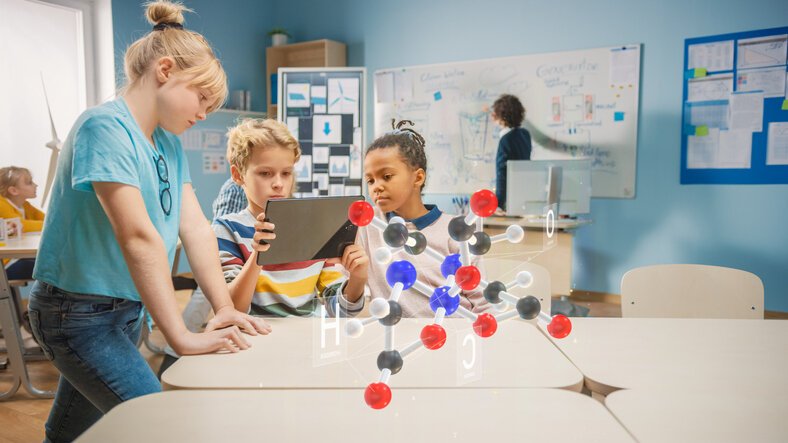When Louisville, Kentucky, elementary school teacher Brandon Graves discusses the events of September 11, 2001, he tells his children where he was that day—as a freshman at Howard University in Washington, D.C., where he smelled smoke coming from the Pentagon.
“I compare it to the times when I was that age and my parents and other adults would discuss where they were when Dr. Martin Luther King was assassinated,” adds Graves.
Teaching K–12 pupils about the 9/11 attacks has never been easy. However, as this weekend marks the 22nd anniversary of the attacks, a new difficulty has emerged because of time: students today don’t remember that day. NPR thus conducted interviews with experts and educators around the nation to get tips on how to discuss 9/11 with children for whom the attacks are only a distant memory.
Above all, make sure it’s age-appropriate.
While there are a number of 9/11 lesson plans available on the Morningside Centre for Teaching Social Responsibility website, the organisation states that “children ages 4 to 7 are too young for a lesson on September 11th.” They don’t have the knowledge necessary to meaningfully interpret the attacks and their aftermath.
For kids starting in the third grade, the National September 11 Memorial & Museum in New York City provides interactive lesson materials.
Morningside suggests a succinct, fact-based narrative of the day for kids in grades three through five, mentioning that about 3,000 people lost their lives:
Allow for discomfort
According to Graves, some young kids may naturally get unsettled by the extent of the sorrow and loss. He remarks, “They’re not used to that.” “They’re accustomed to kid-friendly stories, so the resolution is happy.”
Other educators point out that we frequently underestimate what older kids already know and are capable of, especially when it comes to their education.
The Morningside Centre for Teaching Social Responsibility’s deputy executive director, Tala Manassah, states, “We advise teachers to be bold and courageous in meeting the kids where they are at.” “When we are uncomfortable, there are times when the edges of our learning happen.”
This includes how educators respond to two extremely challenging topics that students have posed consistently:
Make it known who the attacker was and wasn’t.
Texas elementary school librarian Emily Gardner believes it’s critical to be precise and unambiguous when discussing the 19 men who carried out the assaults.
Gardner responds, “We’re very careful to answer that question, that it’s al-Qaida, that it’s a terrorist organisation.” It’s not the Muslims. It’s not individuals from a particular nation.
In certain classrooms, instructors’ discussions of the lessons learned from 9/11 frequently touch on the prejudice and Islamophobia that emerged in the wake of the attacks.
Regarding responding to children who inquire about the reasons behind the actions of those 19 men, Graves states, “It is crucial for educators and adults to be able to sit down with a child and say, ‘I don’t know.'”
Emphasise how they can still be of assistance.
Together with the organisation Global Game Changers, Graves created educational materials about 9/11. Co-founder Jan Helson thinks it’s critical to follow up on a statement like “I don’t know” with something like “But what we do know is that really good people stood up to help us overcome those bad things.”
For this reason, the National September 11 Memorial & Museum has included first responders’ experiences of running towards danger on that day in many of its educational materials. It’s crucial that children feel like they can contribute as well as search for those carers.
Gardner says, “We give students an opportunity to respond and take action.” She recalls an instance when the art teacher at her school “worked with our students and talked with them.”
Get ready to express your emotions
The museum’s vice president of education, Megan Jones, has noticed a pattern in the questions that children have been asking her and her team this year.
Children’s curiosity has historically been mostly centred on the details of that particular day. However, this year, “They’re inquiring as to how it went for you. In what way did 9/11 affect you? When did you feel secure once more?
According to Jones, the rationale for the questions this year is that 650,000 grandparents, parents, brothers, and sisters have died in the United States alone, upending the lives of today’s youngsters and posing a fresh tragedy. The pandemic has left many kids feeling scared and worn out, and they might even be grieving
Jones expresses her hope that the next September 11 Memorial & Museum annual webinar for schools, which begins on Friday, will provide comfort and assurance to the students of the COVID-19 generation. Over a million individuals, primarily students, have already registered; this is almost a threefold increase from the previous year.
This year, Brielle Saracini, who was just ten years old on September 11, 2001, is featured in the webinar. When United Airlines Flight 175 was hijacked and crashed into the World Trade Center’s south tower, her father, Victor Saracini, was flying the aircraft.
In a taped video, Brielle Saracini recalls the days right after 9/11 and states, “I just wanted to be normal.” And a lot of my pain was internalised by me. And since it’s really hard to grieve in public, I choose to keep quiet about it as a coping mechanism.
At the end of the day, Saracini discovered happiness, companionship, and her future spouse at place Better Days, a place reserved for kids who lost loved ones in the attacks. She has also persevered in the face of her own cancer struggle. Jones claims that the COVID-19 youth of today will be able to relate to Saracini’s story of resiliency.
According to Jones, “young people are looking to a generation that did live through a world-changing event and they want to know how did we do it and that it’s possible to come out of it.”
And the responses, which emphasise that helping one another is essential and that it is feasible but difficult, are still applicable today.




